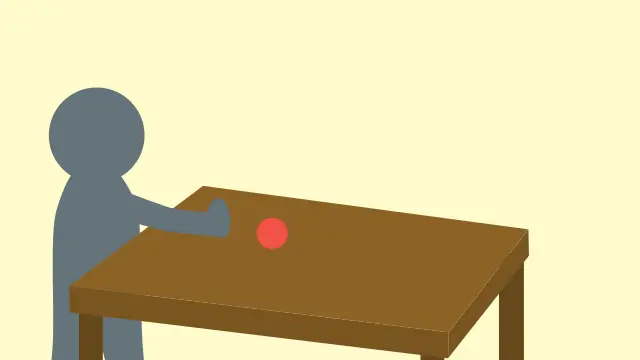Background: I did this experiment with the pre-existing belief that I likely have aphantasia.
Starting with the important question, no, I didn't know the answer to these things before being asked
The ball was red, but I don't think my initial "rendering" involved a colour of a ball at all, because the colour isn't relevant to how it rolls. The ball felt cold, because that's one of the ways I understood its weightiness, and thus how it rolls. The ball was small enough to hold in one hand, but in "visualising" its size, I imagined how it would feel in my hand. The ball I imagined was a bit larger than a tennis ball and much heavier. I can imagine the force my fingers would need to exert to grasp it.
The person who pushed the ball had no gender because it wasn't relevant. When I considered the person's gender, they were a woman, but that information seems to have gotten lost when I "looked away" by considering other questions; when I reread the questions, I "forgot" what gender the ball pusher was, and this time they were man. I suspect that because the information wasn't relevant to the manner the ball was being pushed, the person pushing the ball was in a sort of superposition of gender, where they are both and/or neither man and/or woman, because it was liable to change whenever I "looked away".
The ball pusher(s) didn't look like anything unless I really pushed myself on this question and then I'm like "erm, I guess they were brunette?", but I think a similar thing happens as with the gender question — unless I have a way to remember what traits I assigned to the ball pusher, I'm just going to forget and have to regenerate the traits. I suspect that if I were actively visualising something, these details would stick together better, like paint to a canvas.
The table has a similar effect of nebulousness. My only assumption before you asked further about the table was that it was level (because the ball started at rest) and rectangular/square. When I tried to consider the table in more detail, I asked myself "what can a table be made out of". Wood comes to mind most obviously, because I have a wood table near me. Laminated particle-board is another thing. I also remember some weird, brightly coloured , super lightweight plastic tables from school. It could also be metal. It could have four legs, or it might have a central base like the dining table at my last house. It might be circular, or oval, or rhomboid. I think I just modelled it as squarish because I've learned enough mathsy-physics that I'm inclined to think of spherical cows, and having a straight edge is easier to model for mathematically, and to draw.
Brains sure are wacky, huh?

